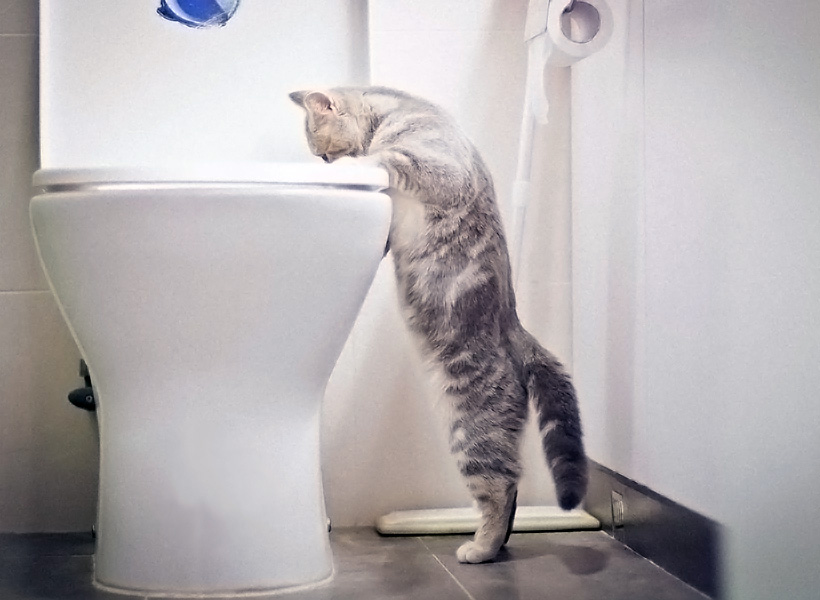Why You Should Never Flush Cat Poop Down Your Toilet - Important Information
Why You Should Never Flush Cat Poop Down Your Toilet - Important Information
Blog Article
How do you really feel in relation to Don’t flush cat feces down the toilet?

Intro
As feline owners, it's important to be mindful of just how we throw away our feline pals' waste. While it may seem hassle-free to flush feline poop down the toilet, this method can have damaging consequences for both the environment and human health.
Ecological Impact
Flushing cat poop introduces hazardous microorganisms and parasites right into the water system, posing a substantial risk to water ecological communities. These pollutants can adversely impact aquatic life and compromise water high quality.
Wellness Risks
In addition to ecological issues, purging pet cat waste can also pose health dangers to people. Pet cat feces may consist of Toxoplasma gondii, a parasite that can create toxoplasmosis-- a possibly extreme ailment, specifically for expectant ladies and individuals with weakened body immune systems.
Alternatives to Flushing
Fortunately, there are much safer and a lot more accountable methods to get rid of pet cat poop. Think about the following options:
1. Scoop and Dispose in Trash
One of the most common approach of disposing of feline poop is to scoop it into an eco-friendly bag and throw it in the trash. Be sure to use a dedicated litter inside story and throw away the waste quickly.
2. Usage Biodegradable Litter
Select biodegradable pet cat trash made from materials such as corn or wheat. These trashes are eco-friendly and can be safely taken care of in the garbage.
3. Bury in the Yard
If you have a yard, take into consideration burying pet cat waste in an assigned location far from veggie yards and water sources. Make certain to dig deep adequate to prevent contamination of groundwater.
4. Install a Pet Waste Disposal System
Buy an animal waste disposal system particularly developed for feline waste. These systems utilize enzymes to break down the waste, minimizing odor and ecological effect.
Final thought
Responsible pet possession expands past offering food and shelter-- it also includes proper waste management. By avoiding purging feline poop down the bathroom and selecting alternative disposal techniques, we can lessen our environmental footprint and shield human health.
Why Can’t I Flush Cat Poop?
It Spreads a Parasite
Cats are frequently infected with a parasite called toxoplasma gondii. The parasite causes an infection called toxoplasmosis. It is usually harmless to cats. The parasite only uses cat poop as a host for its eggs. Otherwise, the cat’s immune system usually keeps the infection at low enough levels to maintain its own health. But it does not stop the develop of eggs. These eggs are tiny and surprisingly tough. They may survive for a year before they begin to grow. But that’s the problem.
Our wastewater system is not designed to deal with toxoplasmosis eggs. Instead, most eggs will flush from your toilet into sewers and wastewater management plants. After the sewage is treated for many other harmful things in it, it is typically released into local rivers, lakes, or oceans. Here, the toxoplasmosis eggs can find new hosts, including starfish, crabs, otters, and many other wildlife. For many, this is a significant risk to their health. Toxoplasmosis can also end up infecting water sources that are important for agriculture, which means our deer, pigs, and sheep can get infected too.
Is There Risk to Humans?
There can be a risk to human life from flushing cat poop down the toilet. If you do so, the parasites from your cat’s poop can end up in shellfish, game animals, or livestock. If this meat is then served raw or undercooked, the people who eat it can get sick.
In fact, according to the CDC, 40 million people in the United States are infected with toxoplasma gondii. They get it from exposure to infected seafood, or from some kind of cat poop contamination, like drinking from a stream that is contaminated or touching anything that has come into contact with cat poop. That includes just cleaning a cat litter box.
Most people who get infected with these parasites will not develop any symptoms. However, for pregnant women or for those with compromised immune systems, the parasite can cause severe health problems.
How to Handle Cat Poop
The best way to handle cat poop is actually to clean the box more often. The eggs that the parasite sheds will not become active until one to five days after the cat poops. That means that if you clean daily, you’re much less likely to come into direct contact with infectious eggs.
That said, always dispose of cat poop in the garbage and not down the toilet. Wash your hands before and after you clean the litter box, and bring the bag of poop right outside to your garbage bins.
https://trenchlesssolutionsusa.com/why-cant-i-flush-cat-poop/

I'm just very fascinated with How to Dispose of Cat Poop and Litter Without Plastic Bags and I really hope you liked the entire piece. Enjoyed reading our blog posting? Please share it. Let another person discover it. Many thanks for your time. Kindly come visit our blog back soon.
Additional Resources Report this page